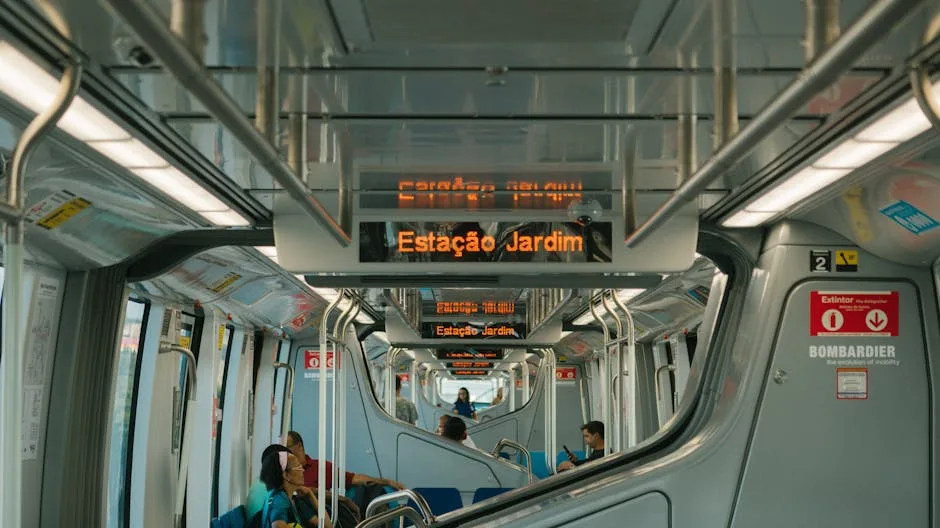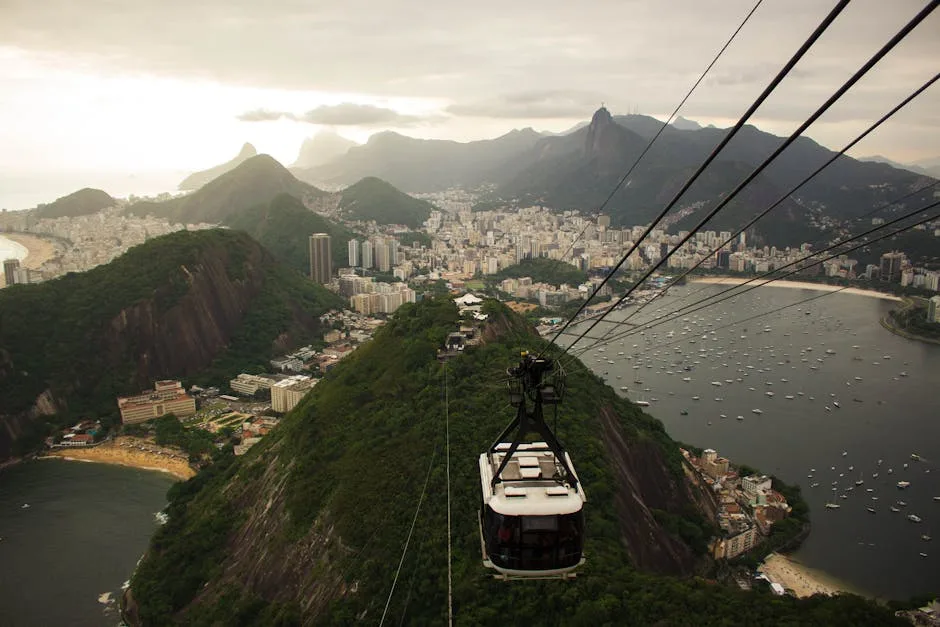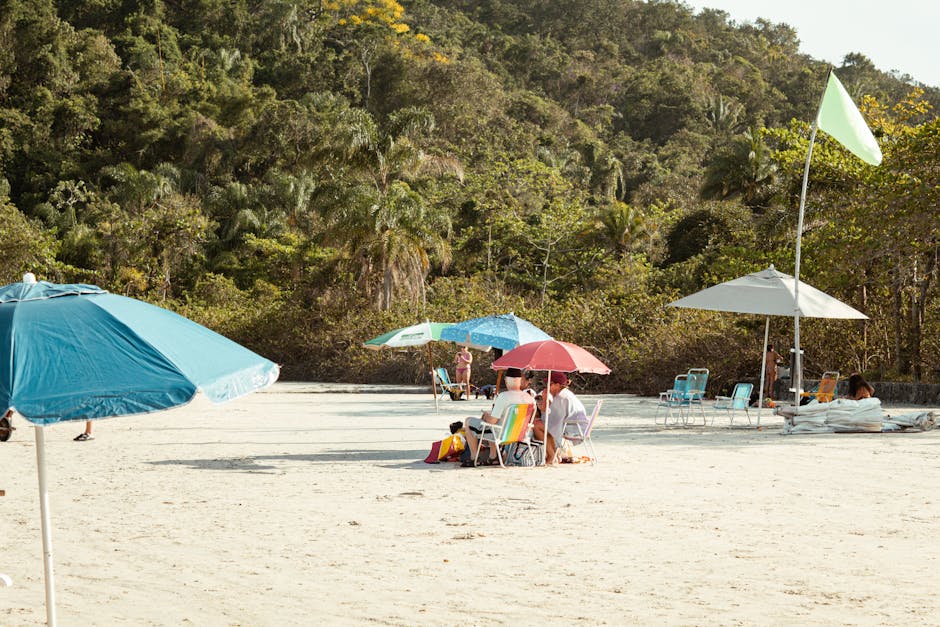- Feeling the Pulse of Brazil: Your Guide to Getting Around
- First Things First: Universal Tips for Brazilian Public Transit
- Navigating São Paulo: The Concrete Jungle's Circulatory System
- The Metrô & CPTM: Your Best Bet
- The Onibus (Buses)
- Ride-Sharing and Taxis
- Getting Around Rio de Janeiro: The Marvelous City's Moves
- MetrôRio: Your Beach and City Connector
- VLT Carioca: The Modern Tram
- Buses, Ferries, and More
- A Quick Look at Other Brazilian Cities
- Traveling Between Cities: Buses and Planes
- Long-Distance Buses (Ônibus)
- Domestic Flights
Feeling the Pulse of Brazil: Your Guide to Getting Around
So, you’re heading to brazil! Get ready for an incredible adventure filled with vibrant culture, stunning landscapes, and unforgettable food. But let’s talk about one of the first puzzles you’ll need to solve: how to get from that amazing beachfront café to the historic city center. Navigating a new country’s public transportation system can feel a little intimidating, but trust us, it’s one of the best ways to experience Brazil like a local. It’s affordable, efficient (most of the time!), and gives you a front-row seat to the daily rhythm of life.
Forget the stress of constant taxi fares and a confusing GPS. We’re here to walk you through the ins and outs of Brazil’s public transit, focusing on the bustling hubs of São Paulo and Rio de Janeiro, with a few tips for other major cities. Before you know it, you’ll be tapping your transport card and hopping on a metro train with confidence.
First Things First: Universal Tips for Brazilian Public Transit
Before we dive into city specifics, here are a few golden rules that will serve you well no matter where you are in Brazil.
- Get a Transport Card: Almost every major city has its own reloadable transport card (like São Paulo’s Bilhete Único or Rio’s RioCard). It’s almost always cheaper and infinitely more convenient than paying with cash for every ride. You can usually buy and top them up at metro stations, lottery houses (lotéricas), and designated kiosks.
- Embrace the Apps: Your smartphone is your best friend. Google Maps is surprisingly reliable for transit directions, including bus numbers and metro lines. Moovit is another fantastic app that’s widely used in Brazil, often providing real-time bus tracking.
- Safety is Key: Like in any big city around the world, be aware of your surroundings. Keep your phone and wallet out of sight, especially in crowded buses or metro cars. Wear your backpack on your front and avoid flashing expensive jewelry. While public transport is generally safe, petty theft can happen.
- Cash is (Sometimes) King: While cards are preferred, it’s a good idea to have some small bills and coins (reais) on hand, especially for buses, in case the card reader is down or you haven’t had a chance to buy a card yet.
- Hailing a Bus: Don’t assume a bus will stop for you just because you’re at the bus stop. You need to flag it down! Stick your arm out as it approaches to signal that you want to board.
Navigating São Paulo: The Concrete Jungle’s Circulatory System
São Paulo is a massive, sprawling metropolis, but its public transportation network is one of the best in South America. It’s your key to unlocking this incredible city, from the skyscrapers of Avenida Paulista to the historic downtown.
The Metrô & CPTM: Your Best Bet
The subway (Metrô) and the suburban train system (CPTM) are the crown jewels of São Paulo’s transit system. They are clean, fast, safe, and well-integrated. The lines are color-coded, making the map easy to follow.
- The Card: The first thing you should do is get a Bilhete Único. This single card works for the Metrô, CPTM, and city buses. You can load it with credits, and it allows you to make up to four trips on buses within a three-hour period for the price of a single fare, or transfer between the metro/train and bus systems for a small additional fee.
- Key Lines for Visitors:
- Line 2 – Green (Linha 2 – Verde): Runs along the famous Avenida Paulista, the city’s cultural and financial heart. It’s the line you’ll likely use the most.
- Line 4 – Yellow (Linha 4 – Amarela): A modern, driverless line that also connects to Paulista and goes through the trendy Pinheiros and Jardins neighborhoods. It’s a key connection to Luz station.
- Line 1 – Blue (Linha 1 – Azul) & Line 3 – Red (Linha 3 – Vermelha): These are the oldest and busiest lines, great for reaching the historic Sé Cathedral, the Municipal Market, and the main bus terminal (Tietê).

The Onibus (Buses)
São Paulo’s bus network is vast and can take you literally anywhere. However, it can also be a bit chaotic for a first-timer. Buses can get stuck in the city’s infamous traffic (trânsito), and routes can be confusing. Our advice? Stick to the metro and trains when you can, and use buses for shorter, specific journeys where the metro doesn’t go. Use an app like Google Maps or Moovit to tell you exactly which bus number to take and where to get off.
Ride-Sharing and Taxis
Uber and the local equivalent, 99, are widely available, safe, and often very affordable, especially if you’re traveling in a small group. They can be a great option for late-night travel or for reaching destinations not easily accessible by public transit.
Getting Around Rio de Janeiro: The Marvelous City’s Moves
Rio’s geography of mountains, beaches, and lagoons makes for a unique transit landscape. The system is great for hitting all the major tourist spots and soaking in the city’s incredible beauty.
MetrôRio: Your Beach and City Connector
The Rio subway is modern, air-conditioned (a lifesaver on a hot day!), and the most efficient way to travel between Downtown (Centro), Copacabana, Ipanema, and Barra da Tijuca. It’s less extensive than São Paulo’s, but it hits all the right spots for a visitor.
- The Card: You’ll want to get a RioCard Mais or a GIRO card. You can purchase and recharge them at any metro station kiosk. They can be used on the metro, VLT, buses, and ferries.
- Key Lines for Visitors:
- Lines 1 & 2 (Linhas 1 & 2): These lines share tracks through the main tourist areas. They connect the city center with neighborhoods like Flamengo, Botafogo, and Copacabana. Line 2 also goes to Maracanã stadium.
- Line 4 (Linha 4): This newer line is a game-changer, extending service from Ipanema/Leblon out to the sprawling neighborhood of Barra da Tijuca.
VLT Carioca: The Modern Tram
The VLT (Veículo Leve sobre Trilhos) is a sleek, modern light rail system that glides through the revitalized port and downtown area (Centro). It’s perfect for traveling between the Santos Dumont Airport (SDU), the main bus station (Rodoviária Novo Rio), and attractions like the Museum of Tomorrow and AquaRio. Remember to validate your card on the validator inside the tram—there are no turnstiles to enter.

Buses, Ferries, and More
Buses in Rio are essential for reaching some key attractions. For instance, you’ll need to take a bus to the base of Sugarloaf Mountain (Pão de Açúcar) or to the stations for the train up Corcovado (Christ the Redeemer). Again, use an app to find the right route. The barcas (ferries) are a fantastic and scenic option for a day trip across the Guanabara Bay to the city of Niterói, famous for its contemporary art museum designed by Oscar Niemeyer.
A Quick Look at Other Brazilian Cities
Brazil is a huge country, and every city has its own flavor of public transport.
- Salvador: The capital of Bahia has a growing metro system that connects the airport and bus station to the city center. To get around the historic Pelourinho and the coastal areas, you’ll rely on a combination of buses and ride-sharing apps. Don’t miss a ride on the historic Elevador Lacerda!
- Curitiba: This southern city is world-famous for its Bus Rapid Transit (BRT) system. The dedicated bus lanes and tube-like stations are a model of urban planning and make getting around a breeze.
- Belo Horizonte: The city primarily uses an efficient bus system, including a BRT network called MOVE. It also has a single metro line that is most useful for commuters but can connect you to some central points.
- Brasília: The unique, airplane-shaped layout of the capital can be disorienting. The metro runs down the center of the city’s main “wings,” but to see the architectural marvels along the Eixo Monumental, you’ll be best served by buses or ride-sharing services.
Traveling Between Cities: Buses and Planes
When it’s time to move from one Brazilian metropolis to another, you have two main options.
Long-Distance Buses (Ônibus)
This is the most popular and budget-friendly way to travel between cities in Brazil. Don’t picture a rickety school bus; Brazilian long-distance buses are generally comfortable, modern, and safe. You can book tickets online through sites like BuscaOnibus or just show up at the city’s main bus terminal (rodoviária). Look for different classes:
- Convencional: Standard, basic seating. Fine for shorter trips.
- Executivo: More legroom and reclining seats. A good mid-range option.
- Semi-Leito & Leito: The premium choice for overnight journeys. These seats recline significantly (leito often goes nearly flat) and are incredibly comfortable.
Domestic Flights
For the vast distances between regions (like from São Paulo to Salvador), flying is your only practical option. Major airlines like LATAM, GOL, and Azul offer extensive networks. Book in advance for the best prices, as last-minute fares can be expensive.
Jumping into the world of Brazilian public transport is part of the fun. It’s a chance to save money, reduce your carbon footprint, and see these amazing cities from a different perspective. So grab a transport card, fire up your favorite map app, and get ready to ride. Your Brazilian adventure is waiting just a bus or metro stop away.




